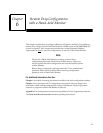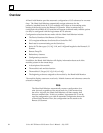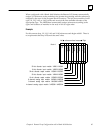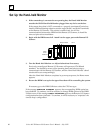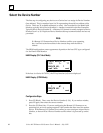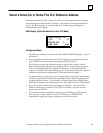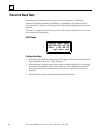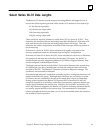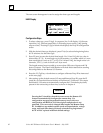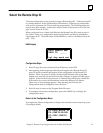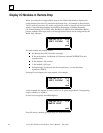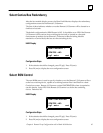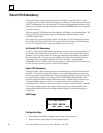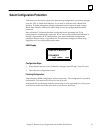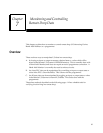
6
91Chapter 6 Remote Drop Configuration with a Hand–held Monitor
Select Series 90–70 Data Lengths
The Remote I/O Scanner must be assigned a starting address and length for one or
more of the following data types that will be used by I/O modules in its remote drop:
%I the discrete input table
%Q the discrete output table
%AI the analog input table
%AQ the analog output table
These entries are required whether or not the host CPU is a Series 90–70 PLC. They
determine the amount of discrete and analog input data the Remote I/O Scanner will
send, and the amount of discrete and analog output data it will accept. They also
determine the relative assignments of modules of the same type which are present in
the remote drop.
If the host is a Series 90–70 PLC, these selections will usually correspond to the
memory assignments made for the remote drop during PLC configuration.
If the host is a Series Six or Series Five PLC, these selections are used only to determine
the amounts of data sent and received by the Remote I/O Scanner. For the PLC to
handle the data correctly, a beginning address in I/O Table or Register Memory must
also be configured, as described previously.
The lengths selected should include all the I/O circuits or channels in the remote drop.
If a data length is too short, modules that overflow the configured limit will not be
serviced by the CPU. The Remote I/O Scanner will issue a diagnostic message. The
condition is not necessarily a fatal fault.
If the data length selected is longer than currently required, unassigned references will
remain at the end of the group. Although these references are not used by an actual
I/O board, they are considered to be part of the remote drop’s input or output data.
During system operation, the Remote I/O Scanner WILL transmit all %I and %AI
references assigned to it, including, under these circumstances, references that are not
used by input modules in the remote drop. Similarly, the host WILL send all the %Q
and %AQ references assigned to the Remote I/O Scanner, including references that are
not used by output modules in the remote drop. This transmission of unassigned
references lengthens the bus scan time, so it is not recommended unless the references
are needed for future expansion.



